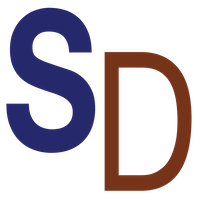
In disease research, it’s important to know gene expression and where in a tissue the expression is happening, but marrying the two sets of information can be challenging.
“Single-cell technologies, especially in the emerging field of spatial transcriptomics, help scientists see where in a tissue the genes are turned on or off. It combines information about gene activity with the exact locations within the disease tissues,” explains Fan Zhang, PhD, assistant professor of medicine with a secondary appointment in the Department of Biomedical Informatics at the University of Colorado School of Medicine.
“This is really valuable because it lets physicians and researchers see not just which genes are active, but also where they are active, which can give key insights into how different cells behave and interact in diseased conditions,” she continues.
Effectively combining location and genetic information has been a tough obstacle for researchers — until now.
Zhang and her lab developed a new computational machine learning method — called Spatial Transcriptomic multi-viEW, or “STew” for short — that enables the joint analysis of spatial variation and gene expression changes in a scalable way that can handle large amounts of cells.
This new technology may help researchers learn more about the spatial biology behind many different diseases and lead them to better treatment therapies.
A path toward an accurate target for effective treatment
The new technology is accurate in finding significant patterns that show where specific cell activities happen, which is important for understanding how cells work and how clinical tissues are structured in diseases. Zhang’s lab has already successfully applied STew on human tissues, including human brains, skin with inflammation, and breast cancer tumors.
For Zhang, who studies inflammatory diseases using computational AI tools and translational approaches, finding a good target for treatment is often a challenge, but STew could help change that.
“With inflamed joints, for example, the genes causing inflammation could be closer to the blood vessel through interacting with mesenchymal structures, or they could be farther away, but knowing that exact location and cell-cell communication patterns helps us better understand the underlying mechanisms,” she says.
By merging spatial biology and molecular diversity, STew gives researchers a new dimension in classifying patient heterogeneity.
“If you only use gene expression to classify patients, you don’t have the full picture,” Zhang says. “Once you add in spatial information, you have a more comprehensive understanding.”
“We expect STew to be effective in uncovering critical molecular and cellular signals in various clinical conditions, like different types of tumors and autoimmune disorders, opening new avenues for dysregulated immune pathways for therapeutic intervention for theses disease,” she continues.
A novel software-driven route to empowering collaboration
There’s another perk that comes with the development of STew: collaboration. Scientific discoveries often benefit from experts from different fields working together.
Because STew has a wide application, Zhang says the software will bring researchers together in new and exciting ways that will ultimately benefit the field of medicine and offer promise to patients in need of treatments.
“We want to encourage researchers across specialties, skillsets, and even departments, to collaborate in ways that they previously might not have been able to do,” Zhang says. “We can accomplish more together, so it’s important to boost data-driven and AI tool-motivated collaboration in a way that is meaningful.”

